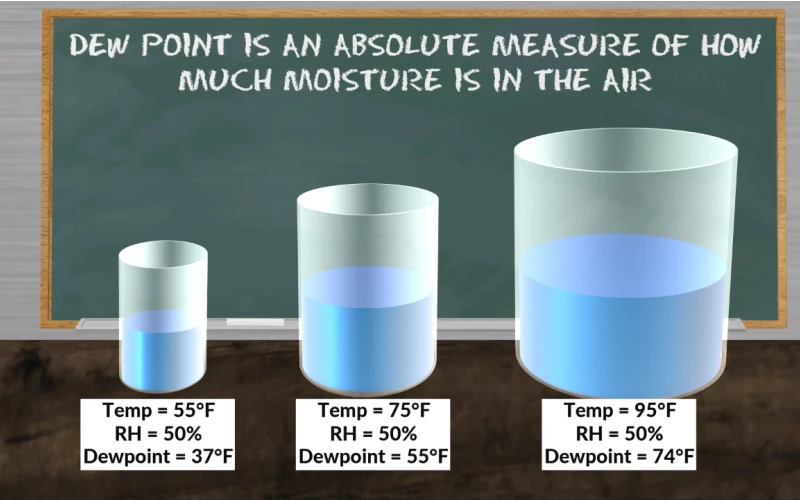
# High Dew Point Impact on Human Comfort and Health
## Understanding Dew Point and Its Significance
The dew point is the temperature at which air becomes saturated with water vapor, leading to condensation. When we talk about a high dew point, we’re referring to conditions where the air feels particularly humid and sticky. Unlike relative humidity, which changes with temperature, the dew point provides a more consistent measure of atmospheric moisture.
## How High Dew Point Affects Human Comfort
A high dew point directly impacts how comfortable we feel in our environment. When dew points rise above 65°F (18°C), most people begin to notice increased discomfort. Here’s why:
– Reduced evaporative cooling: Our bodies rely on sweat evaporation to regulate temperature. High moisture content in the air slows this process
– Sticky feeling: Moisture condenses on our skin, creating that familiar clammy sensation
– Difficulty breathing: Some people report feeling like they’re “breathing water” in extremely humid conditions
## Health Implications of Prolonged High Dew Point Exposure
Extended periods of high dew point conditions can lead to several health concerns:
### Heat-Related Illnesses
With the body’s cooling mechanism impaired, the risk of heat exhaustion and heat stroke increases significantly. Elderly individuals, children, and those with pre-existing conditions are particularly vulnerable.
### Respiratory Issues
High humidity environments can:
– Aggravate asthma symptoms
– Increase mold and dust mite populations, triggering allergies
– Make breathing more difficult for those with COPD or other respiratory conditions
### Cardiovascular Stress
The heart works harder to pump blood to the skin’s surface for cooling, putting additional strain on the cardiovascular system.
## Measuring and Monitoring Dew Point
Meteorologists use dew point rather than relative humidity for assessing comfort levels:
– <55°F (13°C): Dry and comfortable
– 55-65°F (13-18°C): Becoming sticky
– >65°F (18°C): Uncomfortable for most people
– >70°F (21°C): Oppressive and potentially dangerous
## Mitigation Strategies for High Dew Point Conditions
When facing high dew point conditions, consider these approaches:
– Use air conditioning to lower both temperature and humidity
– Stay hydrated to compensate for reduced evaporative cooling
– Limit outdoor activities during peak humidity hours
– Use dehumidifiers in enclosed spaces
– Wear lightweight, breathable clothing
## Climate Change and Rising Dew Points
As global temperatures increase, we’re observing higher dew points in many regions. This trend suggests that heat stress from combined high temperature and humidity may become more common, making understanding and adapting to these conditions increasingly important for public health.
Keyword: high dew point